THE COAST
close to the
Sierra de las Nieves
The Sierra de las Nieves is an excellent base from which to have an interesting day out. In this section we give you a brief resume of each of the areas of the Costa del Sol so that you can you choose the best one if you fancy a visit to the coast. Each does have its own character - from the brashness of Torremolinos to the sophistication of Puerto Banus, each giving a different contrast to the tranquility of the Sierra de las Nieves villages.
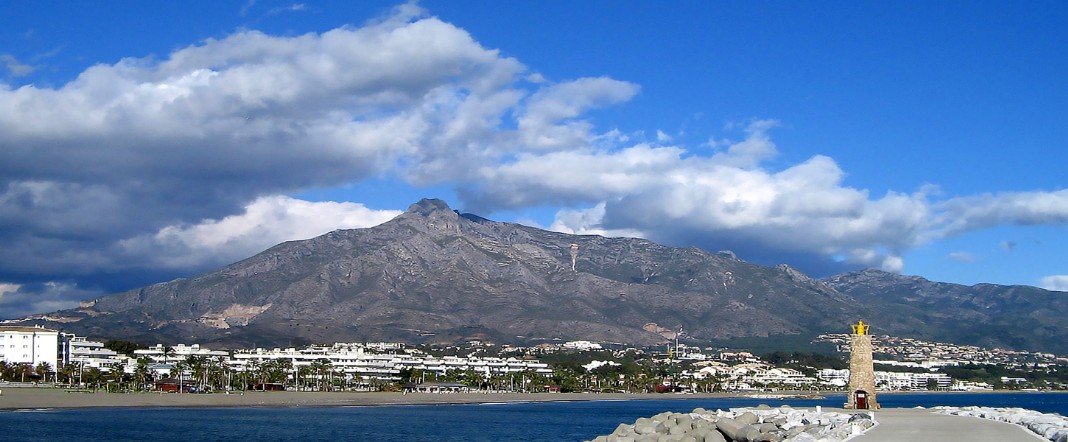
Quick links - Málaga, Torremolinos, Arroyo de la Miel, Benalmádena Pueblo, Benalmádena Costa, Los Boliches, Fuengirola, Mijas Pueblo, Mijas Costa, Marbella, Puerto Banus, San Pedro de Alcántara, Estepona.
This section gives you a brief resume of each of the areas of the nearby coast so that you can you choose the best one for you to visit. Each does have its own character - from the brashness of Torremolinos to the sophistication of Puerto Banus, each contrasting sharply to the tranquility of the Sierra de las Nieves.
Golfers can stay just about anywhere in the Sierra de las Nieves and have a variety of courses close by. For basic entertainment of the international variety, Fuengirola and La Cala are best; just about everything is available in Malaga but it will, almost exclusively, be in Spanish. Puerto Banus has the up-market clubs often frequented by footballers and reality TV people; the further west you go generally means nightlife is more bar-based with the occasional live music venue in high season and weekends.
Golfers can stay just about anywhere in the Sierra de las Nieves and have a variety of courses close by. For basic entertainment of the international variety, Fuengirola and La Cala are best; just about everything is available in Malaga but it will, almost exclusively, be in Spanish. Puerto Banus has the up-market clubs often frequented by footballers and reality TV people; the further west you go generally means nightlife is more bar-based with the occasional live music venue in high season and weekends.
THE COAST
An Introduction
MALAGA
The old historic centre of Málaga reaches the harbour to the south and is surrounded by mountains to the north, the Montes de Málaga (part of Baetic Cordillera), lying in the southern base of the Axarquía hills, and two rivers, the Guadalmedina – the historic center is located on its left bank – and the Guadalhorce, which flows west of the city into the Mediterranean. The historic centre of Malaga is rapidly becoming restored and has many interesting shops, bars and restaurants.
The oldest architectural remains in the city are the walls of the Phoenician city, which are visible in the cellar of the Museo Picasso Málaga. The Roman theatre of Málaga, which dates from the 1st century BC, was rediscovered in 1951.
The beaches vary in quality and those nearer the centre can become very crowded during the weekends. The beaches to the west have less people but are also less well maintained.
Interesting places to visit in Malaga
Museo Picasso Málaga, located at the Palacio de los Condes de Buenavista.
Museo Carmen Thyssen, located at Palacio de Villalón.
Museo de Málaga (Fine Arts and Archeology museum) at the Palacio de la Aduana.
CAC Málaga (museum of modern art). The most visited museum in Andalusia.
Museo Interactivo de la Música (MIMMA). Museum of Wine.

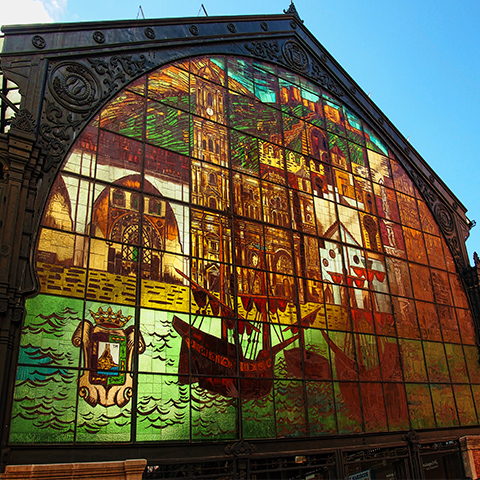

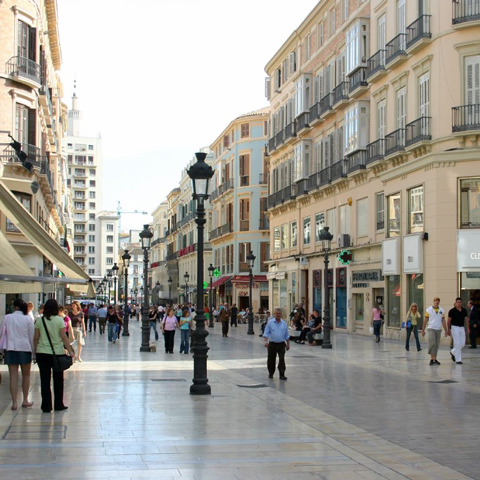
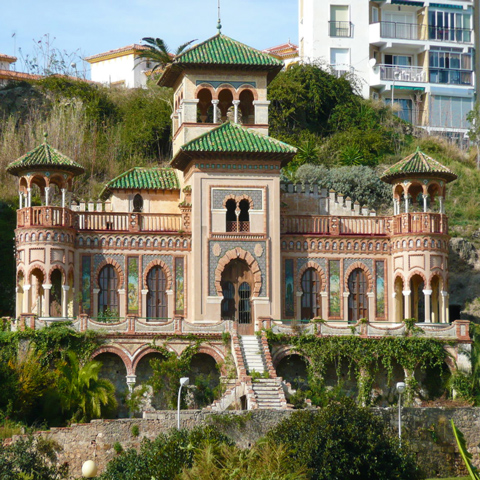
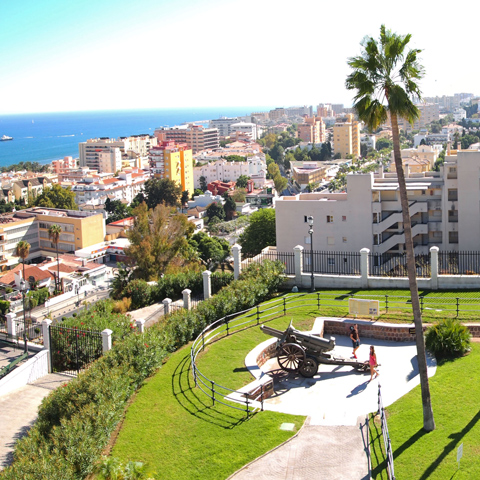
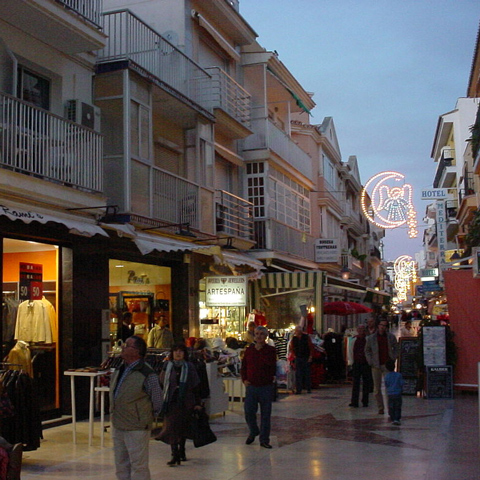
TORREMOLINOS
Torremolinos is immediately to the west of the city of Málaga. It was a poor fishing village before the growth in tourism - which began in the late 1950s; Torremolinos was the first of the Costa del Sol resorts to develop.
Torremolinos is immediately to the west of the city of Málaga. It was a poor fishing village before the growth in tourism - which began in the late 1950s; Torremolinos was the first of the Costa del Sol resorts to develop.
Located on the western shore of the Bay of Málaga and behind the Sierra de Mijas, it lies around 13 km from Malaga and is served by the A-7 motorway - which bypasses the city to the north - and by train.
It is very popular with British tourists and has a large British expatriate population.
Torremolinos is known for its vibrant nightlife, particularly its numerous bars and clubs catering to the gay community.
In Torremolinos you can find their famous Chiringuitos (restaurants on the beach) at Carihuela, Bajondillo, Playamar and Costa Lago. At these bars you can eat fresh fish and seafood. Most are close during the off-season. The beaches can become very crowded during the weekends. The beaches to the west however - a pleasant 10 minute walk along the paseo - are more Spanish and less touristy. The Aqua Park and Crocodile Park are worth a visit.
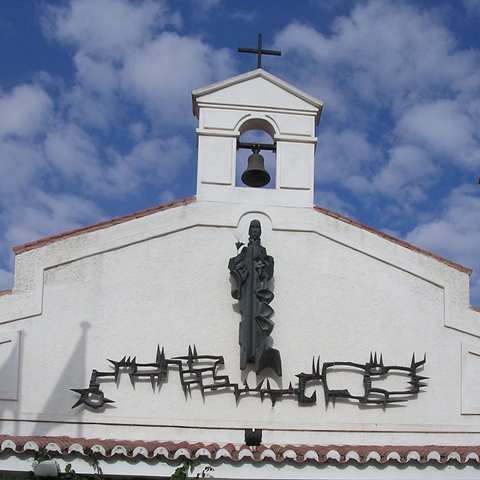
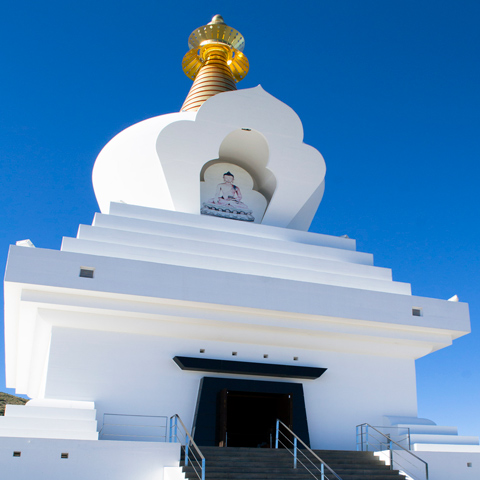
ARROYO DE LA MIEL
Although Arroyo de la Miel is now absorbed into Benalmadena, it is a bustling community with its own distinctive charm.
In the centre of town is the train station, which connects Benalmadena with Malaga and Fuengirola. The frequent train service is used by commuters, tourists and visitors to the Tivoli World entertainment park, the largest family entertainment park on the Costa del Sol.
Opposite the entrance to Tivoli World is another favourite tourist attraction - the Telecabina(Cable Car) which goes up to the highest point in the area and affords spectacular views of the coast.
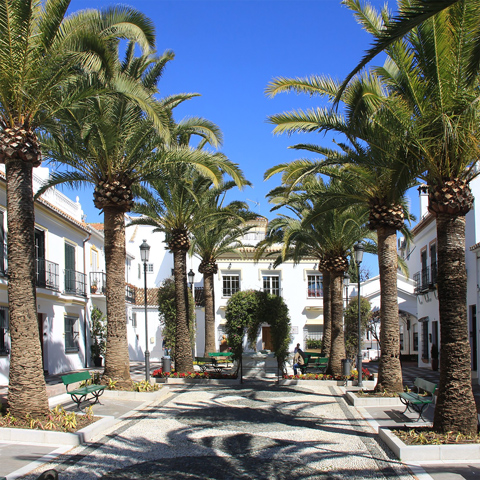
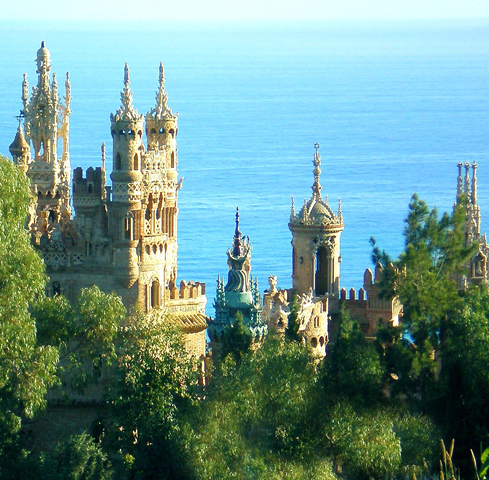
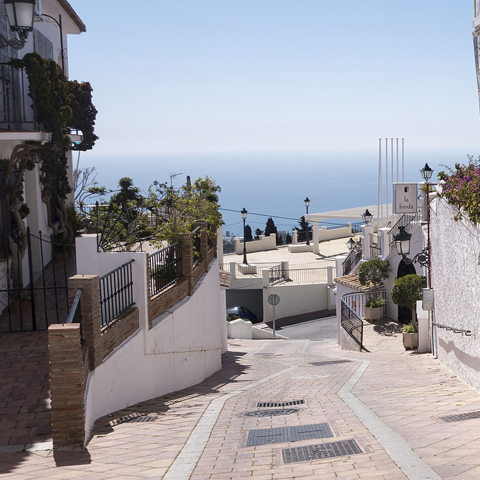
BENALMADENA PUEBLO
Benalmadena Pueblo stands in an elevated position overlooking the coast. Although it is still a fairly traditional whitewashed village, it has now a very international flavour owing to the number of foreign residents and visitors.
Benalmadena Pueblo stands in an elevated position overlooking the coast. Although it is still a fairly traditional whitewashed village, it has now a very international flavour owing to the number of foreign residents and visitors.
There are many places of interest in and around the Pueblo. Plaza Espana, in the centre of the village, is a typical Andalucian square. This is where you will find a fountain with a statue of La Nina, who has become the symbol of Benalmadena; around the perimeter of the square there are some lovely restaurants surrounded by orange trees.
A few minutes walk from Plaza Espana is the village church of Santo Domingo. The church sits on the edge of a hill and affords fantastic views over the coastline, 200 meters below.
Below the church is the famous Colomares Castle. This monument was built in 1984 to honour Christopher Columbus and his discovery of America. The castle contains what is claimed to be the world's smallest chapel, measuring just 1.96 sq. meters. The Benalmadena Archeological Museum is worthy of a visit. - it contains one of the most highly-rated collections in Europe of Pre-Columbian artifacts from South America, together with a collection of local remains from before the time of the Roman occupation.
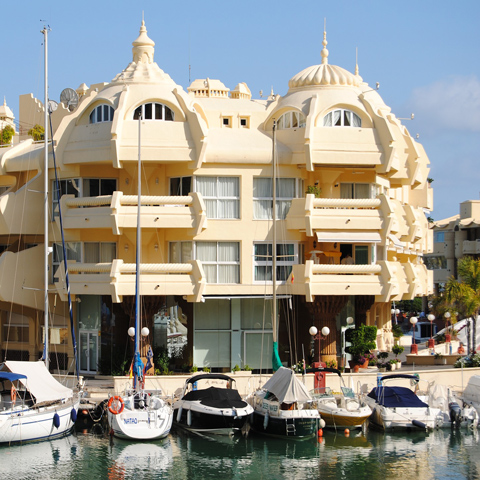
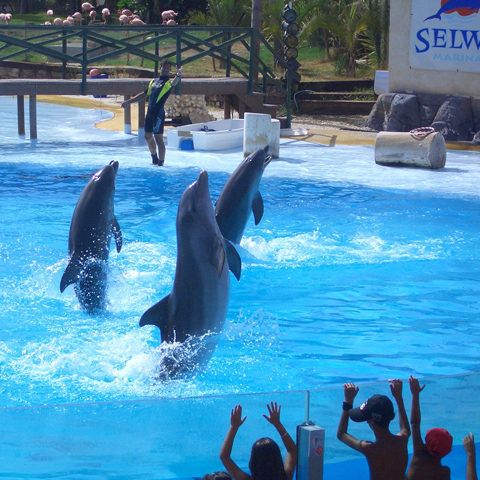
BENALMADENA COSTA
In Benalmadena Costa you will find long stretches of golden sand beaches and many bars, restaurants, themed pubs, discos and a casino all catering to the tourist trade. The beaches are of good quality with plenty of space for sun-seekers and a promenade provides a safe walkway to the award winning Benalmadena marina.
Plenty of attractions for all the family can be found in Benalmadena Costa: Selwo Marina is a theme park with a dolphin show, sea lions, penguins and many other species. The Sealife aquarium in the marina provides a fascinating insight into life under the sea and Parque de la Paloma is a beautifully landscaped park area with a lake, children’s playgrounds and many shaded green areas, perfect for cooling off, having a picnic and relaxing.
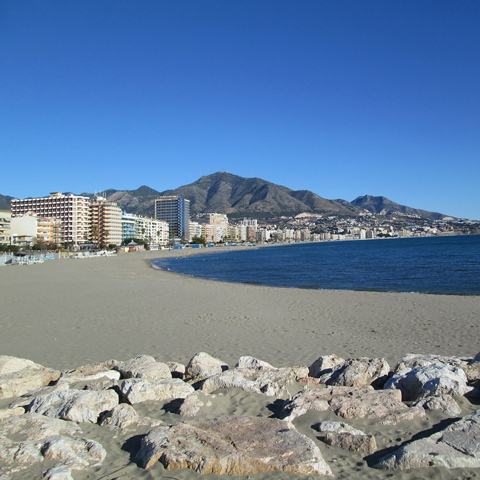
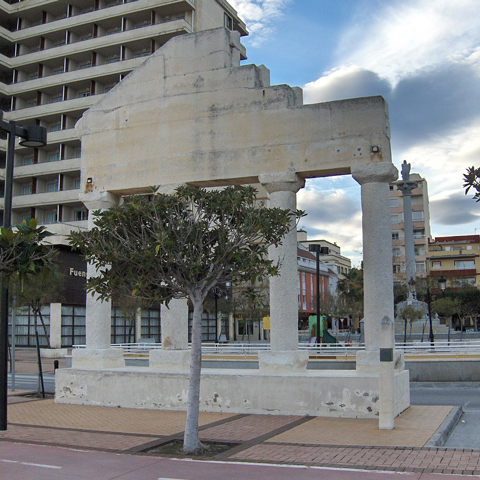
LOS BOLICHES
Los Boliches is located at the eastern end of Fuengirola. It has very good clean beaches with soft sand and nice views along the coast to Malaga. Parking is generally free too. The chiringuitos offer good value for money and the fresh pinchitos of sardines are wonderful. The service is not always with a smile though - but that is the Costa del Sol!
Los Boliches is located at the eastern end of Fuengirola. It has very good clean beaches with soft sand and nice views along the coast to Malaga. Parking is generally free too. The chiringuitos offer good value for money and the fresh pinchitos of sardines are wonderful. The service is not always with a smile though - but that is the Costa del Sol!
Los Boliches centre is very cosmopolitan with large UK and Finnish communities. It is more of a "year-round" place for visitors than neighbouring Fuengirola. It´s where foreigners live - whereas the Spanish seem to prefer Fuengirola. Lots of bars and restaurants are tucked away in the side streets and alleyways.
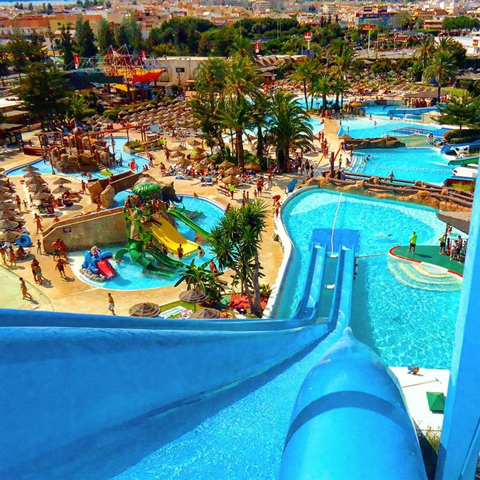

FUENGIROLA
Fuengirola is the largest "real" town on the Costa del Sol. Although the economy is tourist-based, it is a town with a more urban feel.
Away from the seafront, Fuengirola is very Spanish - loud and disorganised - with large apartment blocks and areas of impossible parking. It is the place to locate stuff that is not available alsewhere on the coast outside of Malaga.
The beaches are very good; there is every type of restaurant and bars and, in general, the prices offer good value.
Attractions include: the wonderful Fuengirola Bioparc, the Aqua Park, Sohail castle and the large second-hand market on the fairground on Tuesday and Saturday.
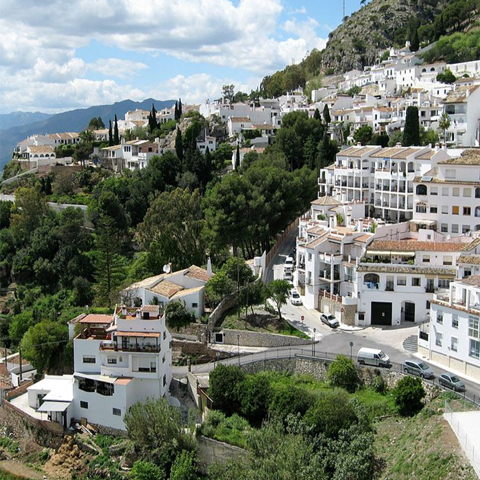
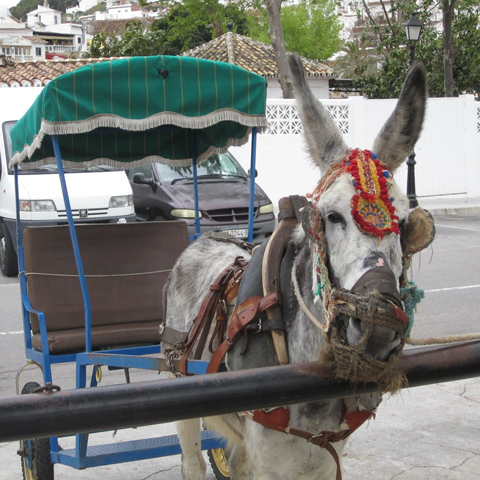
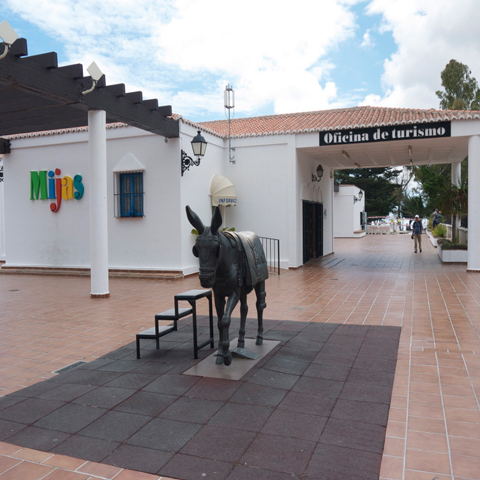
MIJAS PUEBLO
Situated in between Marbella and Malaga and high up above Fuengirola, Mijas Pueblo is a picturesque "tourist version" white Spanish village. Overlooking the Mediterranean sea, Mijas Pueblo is famous for its exuberant festivals, Easter processions and donkey taxis.
Situated in between Marbella and Malaga and high up above Fuengirola, Mijas Pueblo is a picturesque "tourist version" white Spanish village. Overlooking the Mediterranean sea, Mijas Pueblo is famous for its exuberant festivals, Easter processions and donkey taxis.
Dotted around the village are view-points and resting places; one of the most beautiful is a park located beside the Mijas bullring - “The Muralla Gardens” - which offers fantastic views of the area including the old part of the village and the coast.
The main plaza - Plaza de la Virgen de la Pena - is another area to relax and enjoy the atmosphere of the village. The Plaza is also home to a bandstand where free flamenco shows take place every week. Another plaza - La Plaza de la Constitucion - is in the heart of the village; in the centre of this square is a beautiful fountain by the artist Galiano. The plaza is surrounded by several cafés, bars and shops.
Mijas village has several levels, with each street advancing up the mountain. The many narrow streets and paths that interconnect this village are a great way to explore. There are plenty of things to do in the Mijas Pueblo.
Attractions include the village bullring, the local museums and art galleries. There are some well-kept old churches to visit and several walk routes in the hill overlooking the village.
Parking can be difficult close to the centre, so be prepared for some walking.
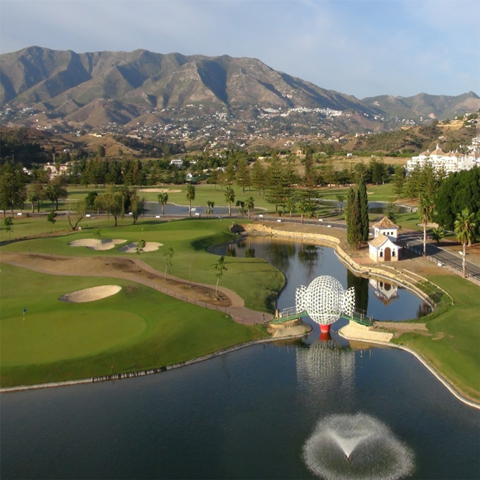
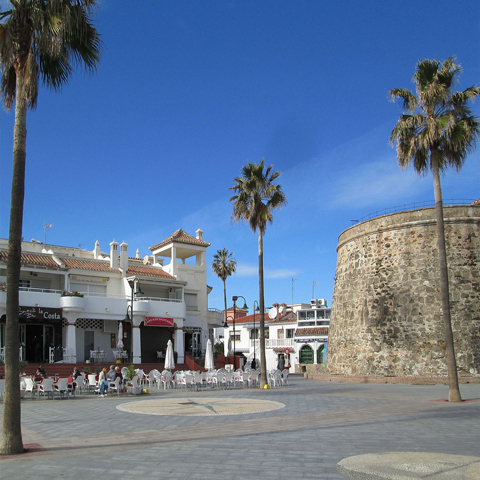
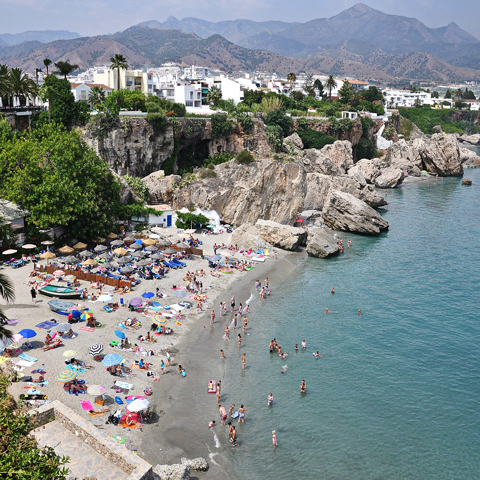
MIJAS COSTA
Covering 12 kilometers, Mijas Costa encompasses El Chaparral, La Cala, El Combo and Calahonda, from east to west respectively. The area is a large tourist hub with many commercial centres, supermarkets, golf course, sports centres, bars and restaurants.
La Cala
One of the best known sub-sections of Mijas Costa is La Cala de Mijas - a growing modern village.
La Cala still retains some of its charm from when it used to be a very small fishing community. It has very good, clean beaches, a good selection of local bars and restaurants from traditional paella to British fish and chips.
Every Wendesday and Saturday from 09:00 - 14:00, there is a local market at the feria ground which is situated next to the main A340. The market stalls offer everything from fresh fruit and vegetables to local crafts, leather goods, sweets and cakes, shoes and handbags and lots more.
Calahonda
Calahonda is an area developed for tourism, with extensive apartment blocks and timeshare facilities stretching from the coast into the hills behind.
Nearby you’ll discover Miraflores, a popular golf and lawn bowls resort.
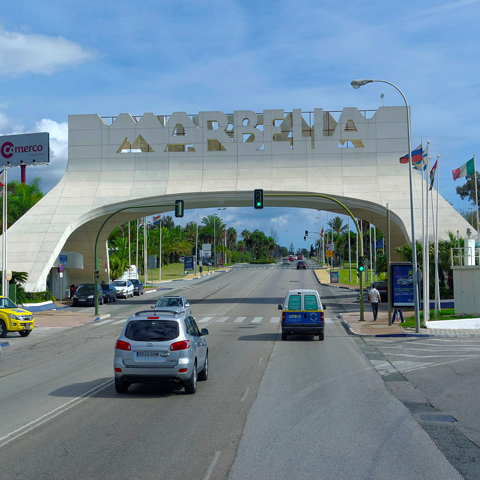
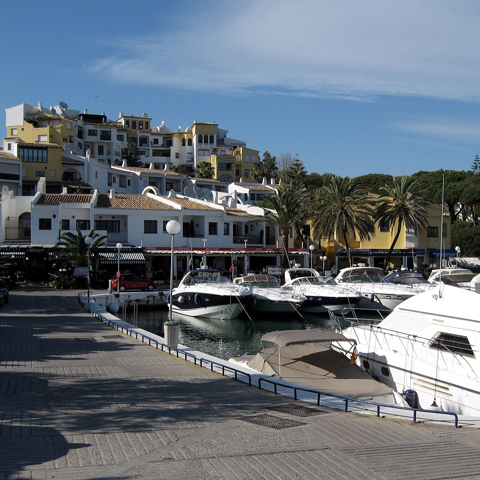
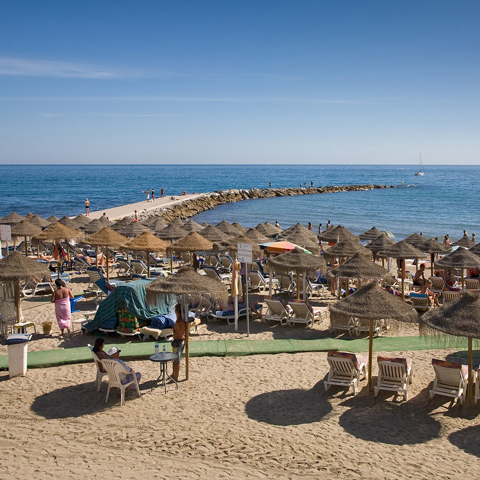
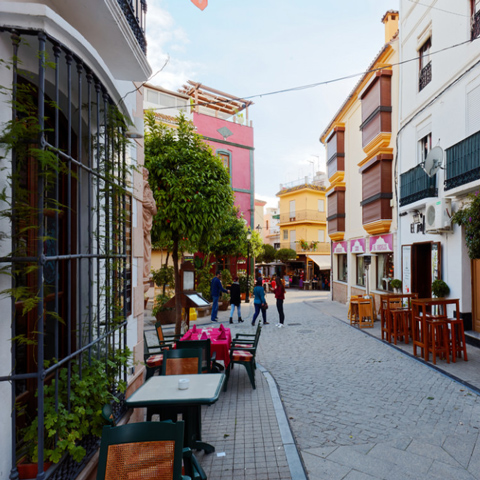
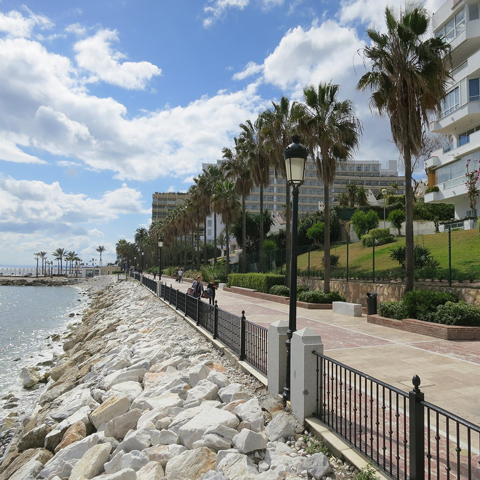
MARBELLA
Although Marbella has numerous local communities, it consists primarilly of Cabopino, Elviria, Marbella and Nueva Andalucia, each having its own distinct character.
Although Marbella has numerous local communities, it consists primarilly of Cabopino, Elviria, Marbella and Nueva Andalucia, each having its own distinct character.
Cabopino
An old fortified watchtower still stands proudly by the sand dunes alongside the beach. From its priviledged position it is possible to see all along the coast to Marbella, Gibraltar and even Africa beyond - a spectacular backdrop for a spectacular beach. Small and tranquil, Cabopino gets busy at lunchtime - especially at weekends - and whether you are after an ice-cream at the beach, or a cocktail at the marina, Cabopino's evening buzz is hard to resist.
There is a nudist beach to the right of the marina.
Elviria
Elviria is surrounded by golf courses and emerald green hills. Elviria has a pleasantly welcoming and laid-back atmosphere. Many different nationalities call the Elviria home. The local centre has a bank, supermarket, a few restaurants and some small shops.
Elviria
Elviria is surrounded by golf courses and emerald green hills. Elviria has a pleasantly welcoming and laid-back atmosphere. Many different nationalities call the Elviria home. The local centre has a bank, supermarket, a few restaurants and some small shops.
Nueva Andalucia
Nueva Andalucia really consists of two main parts - the village of La Campana to the north and the area around the shopping hub of Centro Plaza. They are linked by a number of excellent golf courses and luxury urbanisations. It forms the centre of the famous "Golf Valley".
Nueva Andalucia really consists of two main parts - the village of La Campana to the north and the area around the shopping hub of Centro Plaza. They are linked by a number of excellent golf courses and luxury urbanisations. It forms the centre of the famous "Golf Valley".
There are many quality restaurants and shops and, every Saturday, there is a large market around Centro Plaza and the bullring.
There is also a casino.
Marbella centre
In the chic centre of Marbella, hints of its former Moorish occupation mingle with modern-day resort amenities. There is a lovely promenade for an evening´s stroll towards Puerto Banus.
Marbella centre
In the chic centre of Marbella, hints of its former Moorish occupation mingle with modern-day resort amenities. There is a lovely promenade for an evening´s stroll towards Puerto Banus.
Experience the Andalusian charm of the historic quarter, filled with whitewashed buildings and a wide variety of shops and restaurants, remnants of a ninth-century Arab fortress and fragrant orange trees.
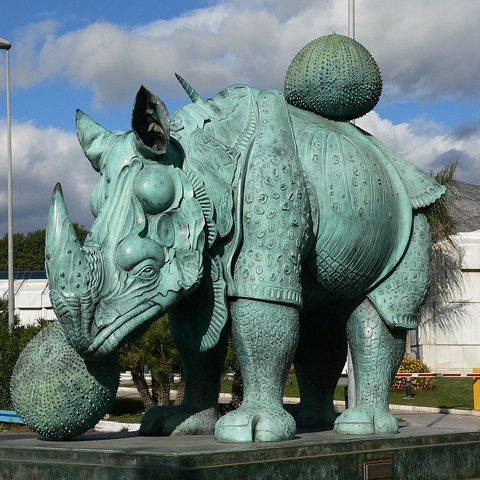
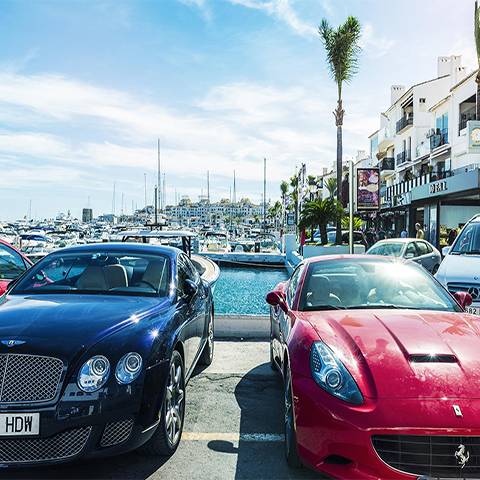
PUERTO BANUS
Puerto José Banús, more commonly known as Puerto Banús is a marina located in the area of Nueva Andalucía - to the southwest of Marbella - and is a luxury marina and shopping complex. Over the years, it has become one of the largest entertainment centres on the Costa del Sol, with 5 million annual visitors, and is popular with international celebrities.
Developed around a coastal village in the Mediterranean architectural style, Puerto Banús contains expensive shopping malls, restaurants and bars around the marina. It is also home to many exotic cars and large yachts.
A three-ton statue of a rhinoceros by Salvador Dalí was placed at the entrance to Puerto Banús in 2004. Dalí created the sculpture in 1956 following the filming of his surrealist movie La aventura prodigiosa de la encajera y el rinoceronte (The prodigious adventure of the lacemaker and the rhinoceros).
A restaurant to visit in Puerto Banus is the famous Pasta Factory - authentic Italian Cuisine and the only garden terrace in the port.
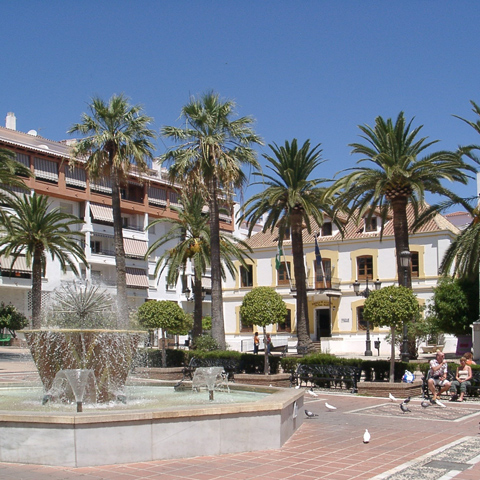
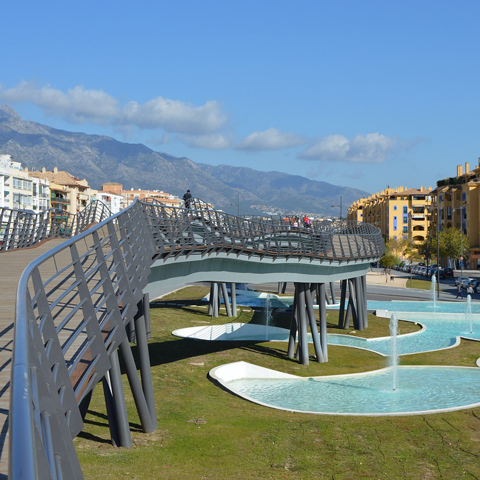
SAN PEDRO DE ALCANTARA
San Pedro de Alcántara has recently undergone a major transformation with the opening of a spectacular boulevard with an elevated walkway and a number of restaurants and small attractions.
San Pedro de Alcántara has recently undergone a major transformation with the opening of a spectacular boulevard with an elevated walkway and a number of restaurants and small attractions.
Next to the boulevard is a new skateboard park.
The central plaza has the parish church and many surrounding narrow streets which are packed with intriguing small shops, sidewalk cafes and bars.
The modern wide promenade is ideal for a stroll with several excellent chiringuitos (beachside restaurants) specialising in fish dishes.
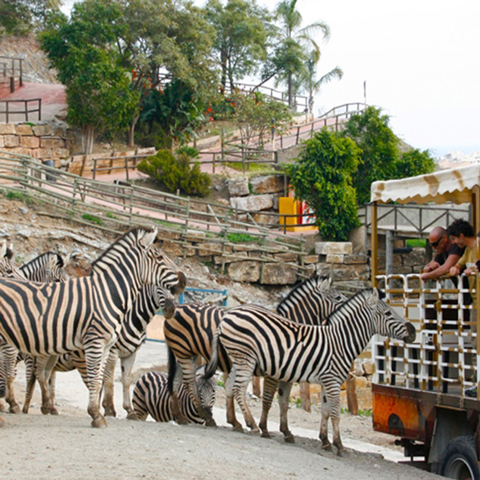
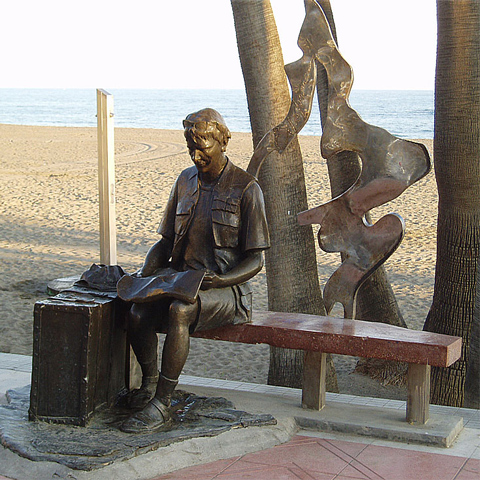
ESTEPONA
Estepona is a popular year-round holiday destination; it has two EC Blue Flag beaches, a modern sports marina with many tapas bars and restaurants.
Estepona is a popular year-round holiday destination; it has two EC Blue Flag beaches, a modern sports marina with many tapas bars and restaurants.
The white-walled town centre has many shops and picturesque squares.
Things to do in Estepona
FIESTAS
Every year there are over 3,000 fiestas in Andalucia and many of them are celebrated in the Sierra de las Nieves.
Each town and village has its own patron saint and yearly procession with a feria. Add to that the many fairs, pilgrimages, carnivals, mock battles between Moors and Christians, food festivals and religious processions, you will be assured that, whenever you visit the Sierra de la Nieves National Park, there will always be plenty to see and do.
COME AND SEE US SOON...